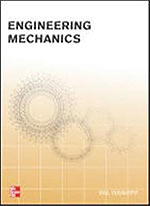 MEM30006A
MEM30006A
MEM30006A: Calculate stresses in simple structures (54 HRS)
Nominal Hours: 54 | Diploma/Adv Dip: Elective (Group 3) | Competency Based
Assessment Plan A: (One Sem: 18 weeks) Updated Mar 2018
| Task | Topic Description and Link to Notes | Quiz # | Practice iTester |
Assess Moodle |
Lesson schedule |
Assess schedule | Work Load% | Must Pass |
| 1 | 10301 | 1 | 4 | 10 | Y | |||
| 2 | 10302 | 2 | 6 | 10 | Y | |||
| 4 | 10303 | 4 | 7 | 15 | Y | |||
| 5 | 10304 | 5 | 8 | 15 | Y | |||
| 6 | 10308 | 7 | 10 | 10 | Y | |||
| 7 |
|
10305 | 9 | 12 | 15 | Y | ||
| 3 | 10306 | 12 | 15 | 10 | Y | |||
| 8 | 10307 | 13 | 16 | 15 | Y | |||
| 9 | Written Test:
|
Exam | - | - | - | 17 | - | - |
| - | TOTAL | - | - | - | - | - | 100 | - |
Quiz = Computer Based Testing: Typically consists of practice mode (iTester) and assessment mode (Moodle).
Exam = Written test submitted on paper, all working shown neatly.
*Where applicable.
ASSESSMENT
(CAUTION: This subject contains most of MEM30006A Stresses, so you should do both together) Assessment is a combination of multiple choice tests, written tests, and submitted reports (print/email).
- Lab Reports: Specification for lab reports. (Including error analysis where required)
- Project Reports: Specification for project reports.
- TESTER
tasks: Computer based learning and assessment using the
TESTER program.
Procedures and rules. For most computer-based assessments, homework must be presented before Tester (exam mode) can be attempted. In some cases, certain programs (e.g. Excel) are excluded from running with Tester during an exam.
When you have completed this unit of competency you will have developed the knowledge and skills to determine the resultant and equilibrant of systems of forces, in one plane, then determine nominal sizes for a simple horizontal beam subject to a combination of uniform and point loadings.
Required Text
| Text book | Subjects | Picture |
| Ivanoff,
Val Engineering mechanics: An introduction to statics, dynamics and strength of materials McGraw-Hill. 1996 ISBN 0074702394 RRP $80.95 (June 2009) |
|
 |
Formula Sheet
Edits: 20200511 Added Torsion diameter formula.
Unit MEM30006A: Calculate stresses in simple structures (54 HRS)
(CAUTION: This subject is strongly dependent on MEM30005A Forces, so you should do both together.
Preferably complete most of Forces first before starting Stresses)
This unit covers determining stresses and their effect on the strength and stability of simple structures and mechanical components.
1.
Determine stresses in simple
structures and mechanical components |
1.1
|
The shear stresses in simple
bolted connections are determined. |
|
1.2 |
The nominal weld size or length
of weld required on simple welded connections is determined to meet
load requirements. |
| 1.3 | The nominal weld size or length of weld required on simple welded connections is determined to meet load requirements. | |
2.
Verify stress
levels using appropriate reference material
|
2.1 |
Appropriate reference materials are used to verify that stress loading is acceptable and in accordance with standard operational procedures. |
|
2.2 |
Verification results are reported according to standard operational procedures. |
|
Required skills
|
Required knowledge
|
Schedule: MEM30005A
Calculate Force Systems Within Simple Beam Structures
1. Stresses |
|
2. Stress levels |
|
Teaching and Learning Resources
- Unit Resource Manual for this unit of competency.
- Textbook: Ivanoff, V; Engineering Mechanics; McGraw-Hill, Sydney, 1996
